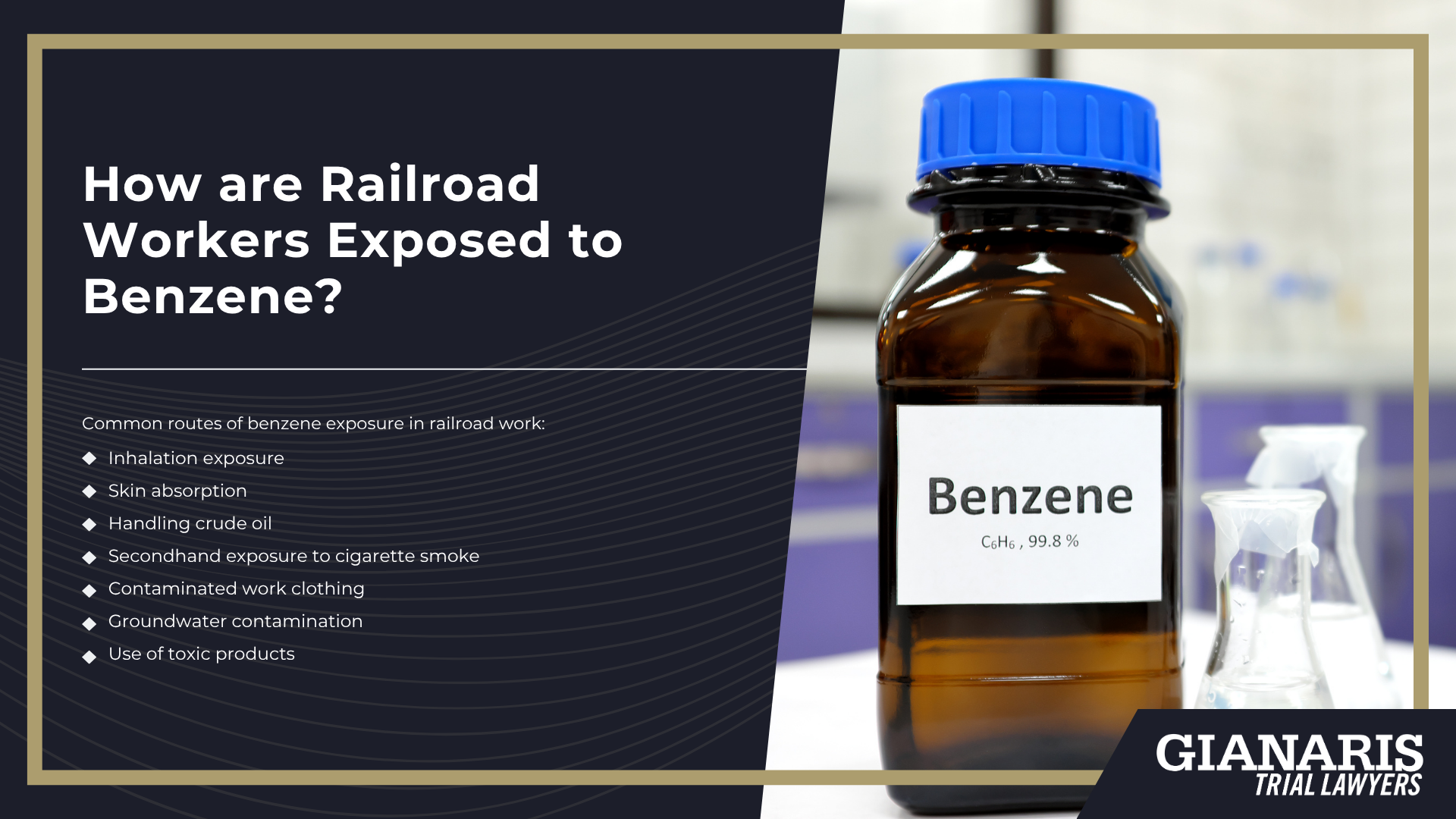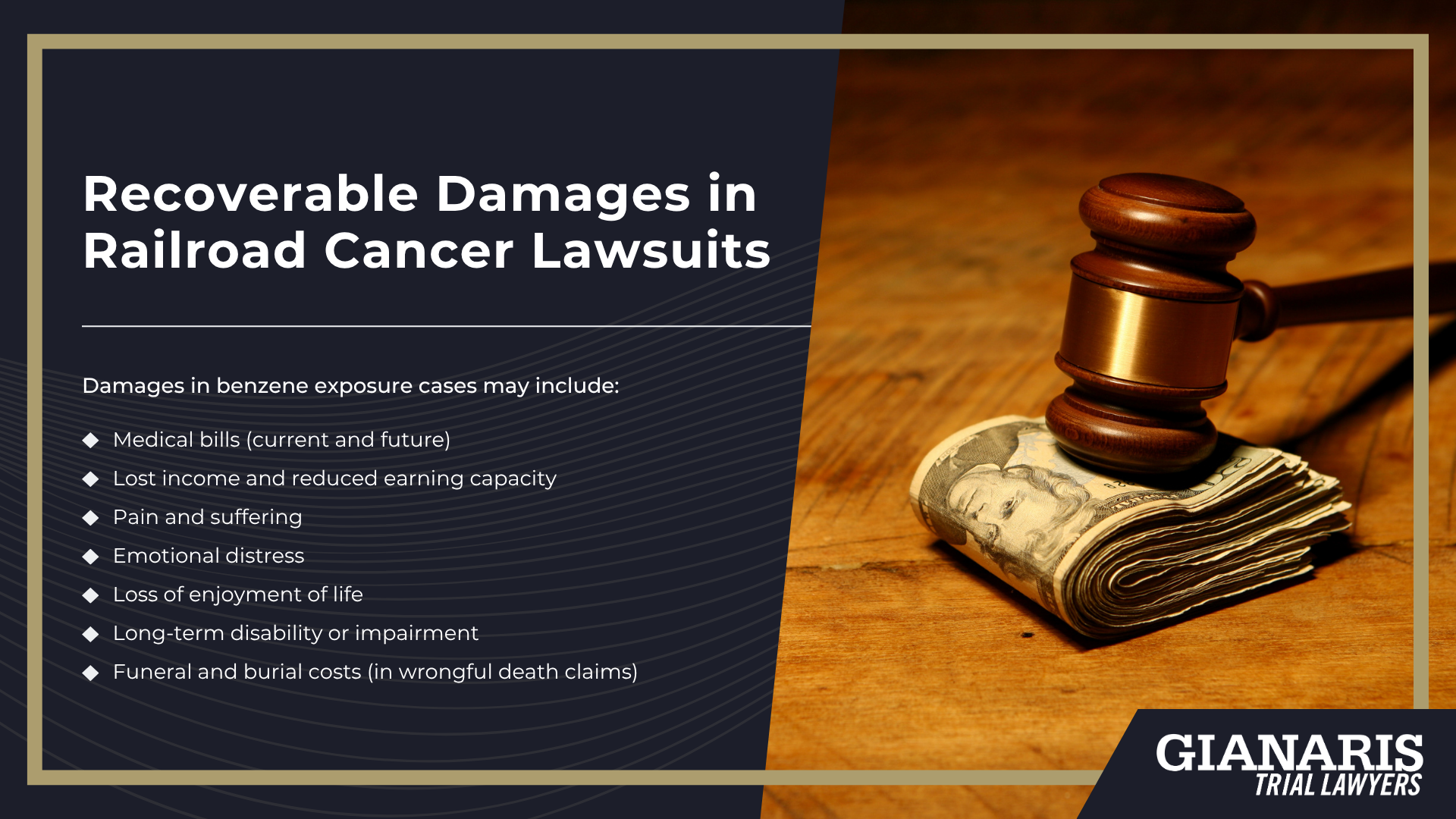Railroad workers can be exposed to benzene through multiple occupational and environmental routes, many of which are present in their day-to-day job duties and surroundings.
Long-term benzene exposure is a well-documented risk in the railroad industry, particularly for workers who handle or spend time near fuels, degreasers, diesel exhaust, and other industrial chemicals.
Benzene is a natural component of crude oil and gasoline, and its widespread use in railroad operations makes exposure nearly unavoidable without proper safety protocols.
One of the most common routes of exposure is inhalation exposure, which occurs when workers breathe in benzene vapors released from fuels, exhaust, and benzene-containing solvents.
Diesel fuel, used extensively in locomotives, often contains benzene and emits it during combustion.
Workers in engine maintenance, fueling, or yard operations are regularly exposed to diesel exhaust, placing them at increased risk.
Exposure may also occur when cleaning parts with benzene-containing degreasers or working in poorly ventilated areas where chemical vapors accumulate.
Some workers may encounter secondhand exposure to cigarette smoke, which contains benzene and can compound risks in enclosed or confined environments like railcars or maintenance sheds.
Over time, even small amounts of secondhand benzene exposure can build up in the body, especially when combined with other occupational risks.
Groundwater contamination near rail yards, fuel storage areas, or maintenance depots can also pose a threat, especially if workers come into contact with tainted water during inspections, cleanups, or in living quarters situated near contaminated sites.
In many benzene exposure cases, railroad workers were not adequately warned about the dangers of the chemicals they used or the environments they worked in.
The use of toxic products without sufficient protective equipment or hazard communication was common practice for decades.
As more is learned about the health risks associated with these substances, it has become clear that railroad companies may have failed to provide a safe workplace.

Common routes of benzene exposure in railroad work:
- Inhalation exposure from diesel exhaust and fuel vapors
- Skin absorption through contact with benzene-containing solvents and degreasers
- Handling crude oil or working near leaking fuel lines and tanks
- Secondhand exposure to cigarette smoke in shared or enclosed workspaces
- Contaminated work clothing brought home or worn repeatedly
- Groundwater contamination from historical spills or inadequate containment
- Use of toxic products without proper training or protective gear
These exposure pathways can lead to chronic health conditions after years of repeated contact, and many railroad workers only become aware of the danger after being diagnosed with blood-related cancers or other benzene-related illnesses.
Common Health Problems Linked to Benzene Exposure
Long‑term exposure to benzene (even at levels historically considered “safe”) is strongly associated with serious hematological diseases and blood cancers.
Epidemiological research consistently shows that occupational exposure raises the risk of acute myelogenous leukemia (AML), with dose‑response patterns intensifying risk as cumulative exposure increases
Scientific reviews also link benzene exposure to multiple myeloma, though the strength of that connection is less definitive.
There is some evidence of increased risk for non‑Hodgkin’s lymphoma, particularly among those with high or prolonged exposure.
Benzene damages bone marrow function, leading to reductions in red blood cells, white blood cells, and platelets, which can result in anemia, immune suppression, and excessive bleeding.
It is also recognized as a causal factor in myelodysplastic syndrome (MDS), a pre‑leukemic bone marrow disorder that may progress to AML.
Chronic benzene exposure can lead to other blood disorders involving marrow failure and reduced hematopoietic function.
Less common but still observed are disorders such as aplastic anemia, where bone marrow stops producing sufficient new blood cells after prolonged contact with benzene.

Serious health conditions linked to long‑term benzene exposure:
- Acute myelogenous leukemia (AML)
- Myelodysplastic syndrome (MDS)
- Multiple myeloma
- Non‑Hodgkin’s lymphoma
- Aplastic anemia
- Chronic blood disorders including anemia, leukopenia, thrombocytopenia
- Excessive bruising or bleeding due to low platelet counts
- Immune suppression from bone marrow damage








